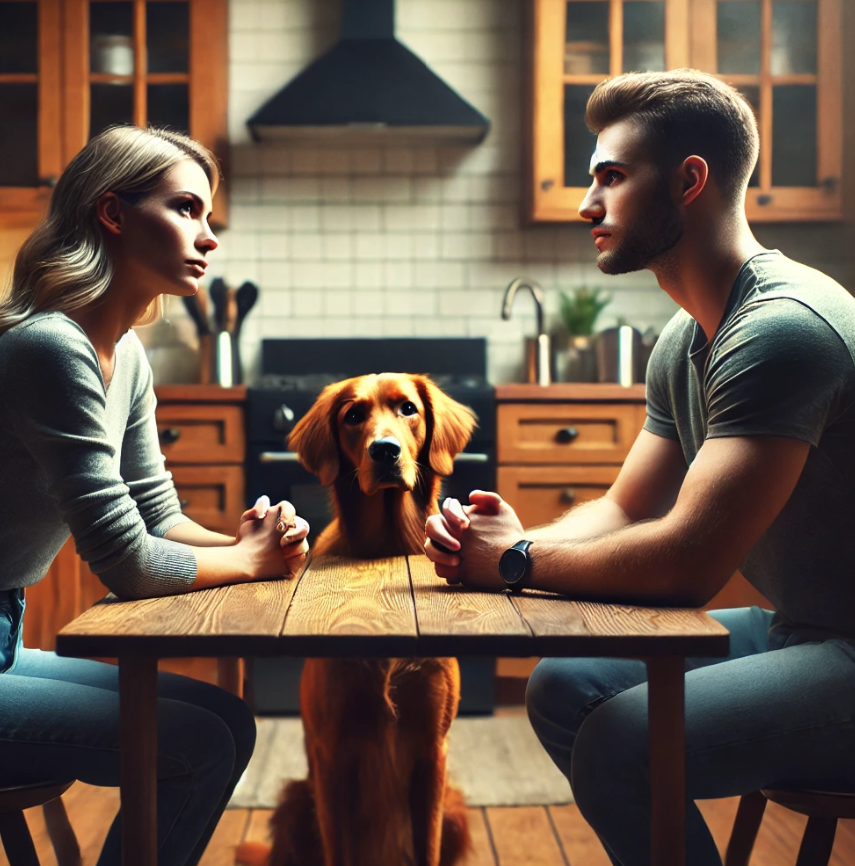What to Expect In Dog Aggression Training
Size doesn’t matter in aggression. I am going to shoot straight with you — no matter what
I’ve learned the hard way over the years that giving too much leeway to the pet parent on guidance, implementation of change, and proper use of tools and consistency generally falls short of success. When you train with me there may be some tough love conversations.
Expect me to ask a lot of questions before your training starts & and more during. Expect me to just tell it like it is — even if you don’t like it or don’t want to hear it.
Expect me to be supportive and partner with you for the next 3-6 months (depending on severity) to help you through the initial training, live with the changes, deal with setbacks and changes, and create a new normal for these dogs.
It will be my goal to identify the cause of the root aggression and work with your dog to gain trust, confidence and understanding of alternative ways to respond. I will need you to understand your role in the behavior, the resolution, and the ongoing maintenance.
We will explore nutrition, breed instincts, and whole-dog wellness that will include essential oils and supplements where appropriate to increase the overall health of mind, body, and spirit. You may be required to modify your dog's diet, and allow me to consult with you on supplements & products to support how your dog feels physically and emotionally in order to reach a deeper resolution.
Aggressive Dog Behavior Consultations
We’ll start with an evaluation, assessment, and working consultation. This I a requirement for all dogs with aggressive behavior. All Dogs and all in-home family members will need to participate.
In your assessment, you’ll get a better understanding of your dog’s aggression, the severity, and what can be done about it.
After this assessment, I will create a custom training program for your dog and family and give you an opportunity to decide whether to continue with the behavior modification program or not.
I’m good at these things and it just becomes a matter of your commitment and willingness to give your dog a change and your acceptance of the risks and liability of severity. With the exception of dogs demonstrating aggression targeted at children in the home — I think there are many opportunities to put in the effort for change at least for a period of time to see how it feels to you before you make any final decisions.
You may be guided to training tools, detox protocols, nutritional changes, or resources that I believe will contribute to a better resolution / outcome for your dog and family.
You may be guided to a medical check-up with your vet. Pain, trauma, nutrition, emotional history, and illness may be contributing factors to aggression and must be solved before training can be fully effective.
In extreme cases, it may also be necessary to explore prescription medication for behavioral issues. We prefer to exhaust all our efforts before turning to medication. And if your dog is on meds now, we may request them to be weaned off before training begins.
During the Behavior Modification Program
You will have homework to do. Changes to make. Rules to implement. All family members must be on board and commit to the new rules & consistency. Your dog will have a very structured routine, confident leadership, and a solid obedience foundation. The foundation is essential.
You will be asked to move to a Nothing In Life Is Free Approach.
They need to see you as a confident and consistent leader. TYour dog will be relieved of duty from being the in control of your home.
Expect me to challenge you and hold you accountable to the training. Of course, I’ll work with you to meet your capabilities, environmental situations, and budgets.
For severe aggression cases, you may be guided to have a complete veterinary work-up, including blood work completed.
If your dog is on anxiety medications, we will want to wean the dog off those medications. Training a dog under the influence seldom yields sustainable results.
Muzzle conditioning will be required for human aggression and for dog-to-dog aggression within the same home.
Ecollar Training For Dogs Who Fight in the home and for human aggression, the ecollar will be required.
You will need to practice obedience and incorporate skills into everyday life and routines
You’re going to need to do some training with your dog on a regular basis to keep him mentally stimulated and challenged, and keeping you in a position of leadership
You’ll need to exercise the dogs in ways that provide outlets for their natural instincts and needs of the breed.
You are going to have to correct your dog.
Dog To Dog Aggression
We will be looking for underlying issues of dog to dog aggression — insecurity, lack of confidence, bullying, bratty behaviors.
If you have more than 1 dog in your home fighting both dogs must participate in the training program. Even if only one is the aggressor. Why, so we can spend lots of time with your dog(s) getting to know their behavior and underlying issues. We will see things you don’t see. And we’ll push buttons that you might not be willing to push. We will create scenarios for proofing your dog’s responses. And we’re a lot better skilled at timing, technique and working through the issues.
You’re going to need to do some training with your dog on a regular basis to keep him mentally stimulated and challenged and keeping you in a position of leadership
You’ll need to exercise the dogs in ways that provide outlets for their natural instincts and needs of the breed. If their unique needs are different, you must meet them.
You’re going to need to do work with each dog 1:1 and with the dogs in pairs and packs.
You will need to crate your dogs when you are not able to supervise
You are going to have to supervise all interactions
Does Dog To Dog Aggression Training Always Work?
Not always. I have no magic. Even with the most obedient dogs and best of owners, there may come a point where the dogs simply are incompatible.
Sometimes with litter mates, it is just to difficult or to unsafe for them to live together.
Sometimes, the fight can be so bad that the emotional scars are hard to overcome for one of the dogs.
Sometimes what we get is tolerance, not buddies and playmates. And it can take a really long time to continue making incremental progress.
When dogs are significantly varied in size and are not getting along, there is a considerable risk to injury to the smaller dog
2 female dogs can be significant fighters.
You have a lifetime to live with and manage the dog & safety protocols and keep these skills sharp, rules clear, and leadership in place. It’s not always easy.
The bottom line is you will be required make some changes too. And you must stick with them. It’s a big responsibility to live with and rehab dogs with dog-to-dog aggression or human aggression.
Canine Aggression Types:
Aggression Towards Humans
With Bite History or Risk of Biting
You must to implement safety protocols
You must take added precautions for who cares for your dog when you’re on vacation
Aggression towards Children
We’re going to have some very serious conversations. And in many cases, you may be advised to rehome the dog.
All interactions must be supervised & your dog muzzled.
Safety protocols must be implemented.
Fear Aggression:
If your dog is forced to be in an uncomfortable situation and react aggressively to protect itself around another dog or person. This is very uncommon, only about 10% of dogs are defensive. Usually, these bites are small warning snaps. and don't leave much damage.
Offensive Aggression:
If your dog has options but chooses to put itself in a situation where they bully or act aggressively towards a person or dog, they have offensive aggression. (90% of the dogs that we see) Usually, these bites are more serious and sometimes need stitches.
Resource Guarding In Dogs
We will address resource guarding of food, toys and possessions, personal space, or guarding people.
Muzzle Conditioning may be required.
Ecollar Training may be required.
And yes, your dog will need to be corrected. I need to teach you how to do fairly, effectively and with a lot less emotional stress than you may currently have.
What you can Expect After Dog aggression Training
Training does not end. Management does not end. While you may not have to put in hour-long training days every day in the future. you are going to have to maintain your dog house rules, obedience, and your leadership. You’ll need to keep up with safety procedures and appropriate tools, kennels, door locks, muzzles, ecollars, etc.
You may move along for months and then realize your consistency or leadership has waned a bit and you need to tune-things up again.
Some of you are going to try to discontinue the use of training tools or safety measures too soon. Don’t Do It.
There are some dogs who simply thrive better with a very structured lifestyle.
See the Post on Living With An Aggressive Dog

